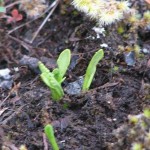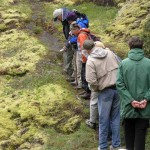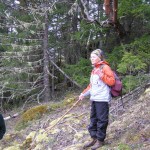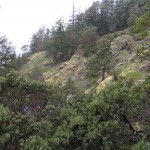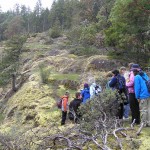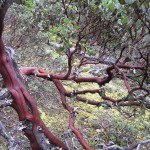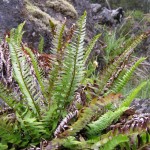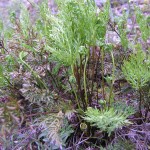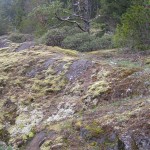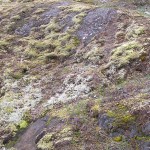
News/Reports
Field Trip by FoER Board members to Comox Lake Bluffs
On May 6, 2007, members of the Friends of Ecological Reserves Board joined retiring warden Chris Pielou current warden Helen Robinson along with Bowser ER warden Maggie Little and others for a trip to the slopes of the Comox Lake Bluff Ecological Reserve.
Mouse over images will initiate comment on the image. Click for large version of image
- Chris Pielou guided a number of the FER Board of Directors on a trip to see the Comox Lake Bluffs Ecological Reserve on May 6, 2007
- Manzanita on the dry slopes of the bluff
One serious management problem in the reserve is the presence of dirt bikes on the sensitive vegetation of the rock bluffs. Lichens and mosses abraded from the surface leave scars which will take a long time to recover
It is hoped that education of members of biking clubs may address this recurring problem. This close up with highlights shows the damage.
Hiking a short distance along the bluffs, Arctostaphylos columbiana (hairy manzanita), Arctostaphylos uva-ursi (kinnikinnick) and the hybrid Arctostaphylos x media were observed scattered along the slope.
A few large Juniperus scopulorum (Rocky Mountain juniper) trees were evident along with a number of smaller specimens. )
Asplenium trichomanes (maidenhair spleenwort) and Selaginella wallecei (Wallace’s selaginella) were also noted
Thanks to Mike Fenger , Marilyn Lambert and Louise Beinhauer for the photographs and to Evelyn Hamilton for the commentary.
This site is reported to support the northern most populations of Lomatium utriculatum (spring-gold). This plant and 3 other Lomatium species are the subject of a study by *Travis Marsico Ph.D. Candidate Department of Biological Sciences.University of Notre Dame, Indiana. (see note below on his research.
* Report of Travis Marsico: . May 6, 2007..
The paragraph below discusses the scientific questions behind my research:
Global climate change has implications for the persistence and distributions of
species. Because range shifts are likely the most important mechanism for
species persistence under rapid anthropogenic climate warming, understanding
limitations to current species&Mac226; range boundaries and predicting the potential
for range shifts is crucial for determining species&Mac226; responses and the role of
biodiversity management. My research addresses limitations to species
distributions for three species in the Lomatium genus that differ in abundance
from rare to common. Field experiments designed to understand limitations to
seedling establishment in current populations and beyond species range
boundaries are used to predict how each Lomatium species will likely respond to
climate change. Additionally, I am conducting a genetic survey to determine
levels of population genetic diversity and isolation. Results from field and
genetic data will be used to model the probability for species migration under
climate change for each of the three study species, focusing on the importance
of abundance for the likelihood of range shifts.
Further note: ” I was also successful that day in finding L. utriculatum and
L. nudicuale on Goose Spit in Comox and L. nudicaule farther north along the
beach in Oyster River.”
**Range: Scattered in Europe and North America, south to CA, NM and PA. BC range: Southern Vancouver Island (Sooke Hills, Mt. Benson, Port Alberni), Nairn Creek, Crevice Mtn.
Habitat: Vernal Pools, seepage areas
Rare status: R2 BC CDC status: BLUE Status outside: Rare in AB, NS, IL, IA, OR, WY, endangered in IN, WI, threatened in RI. Botrychium simplex also occurs on Texada Island, near Castlegar, and in Rogers Pass (Mount Revelstoke National Park and Glacier National Park). In Rogers Pass, it grows with the rare Hypericum scouleri ssp.nortoniae. There are a number of interesting plants that share a disjunct coastal bluff–inland bluff distribution; the hornwort Anthoceros punctatus and parasitic Orobanche uniflora are among them.– Patrick Williston

